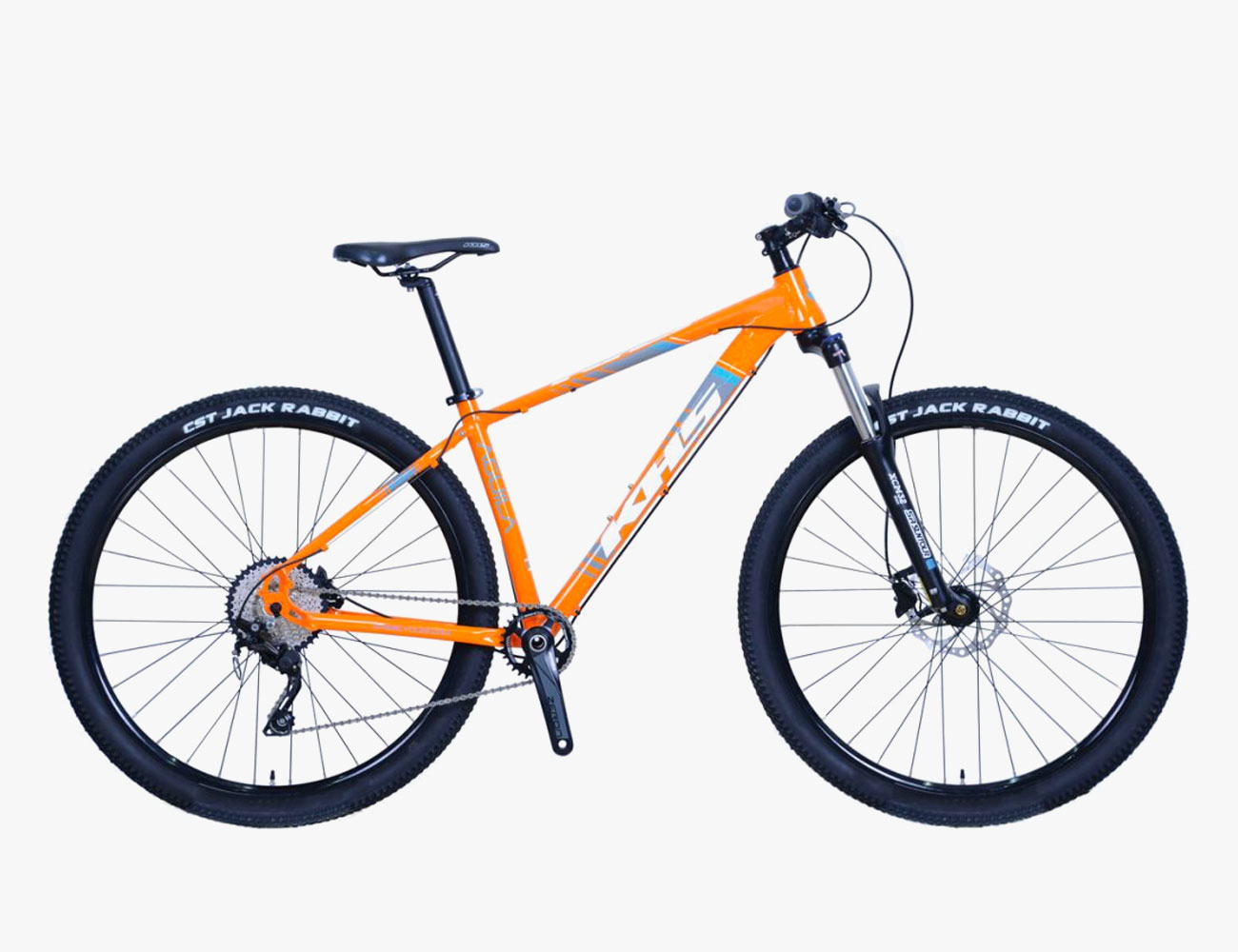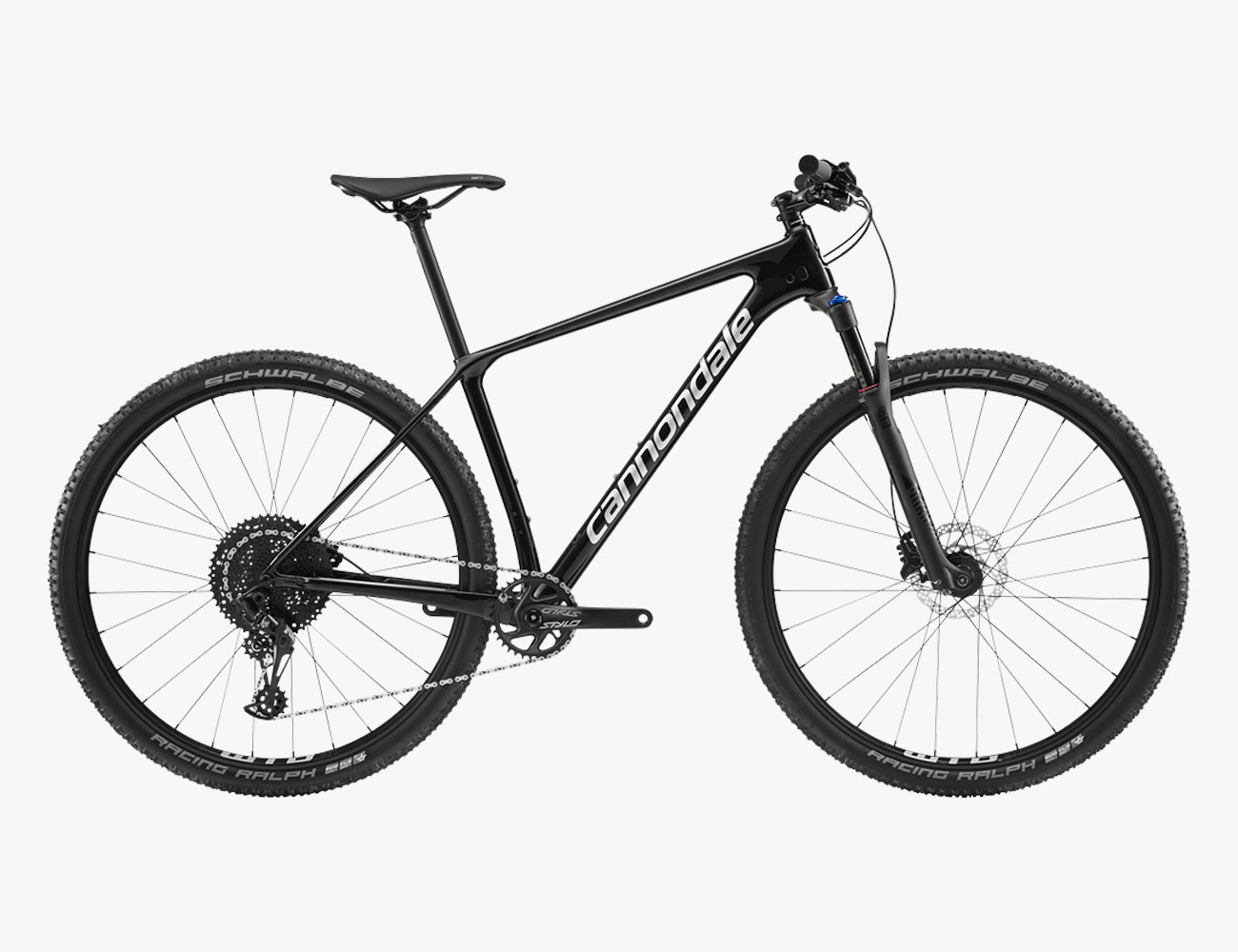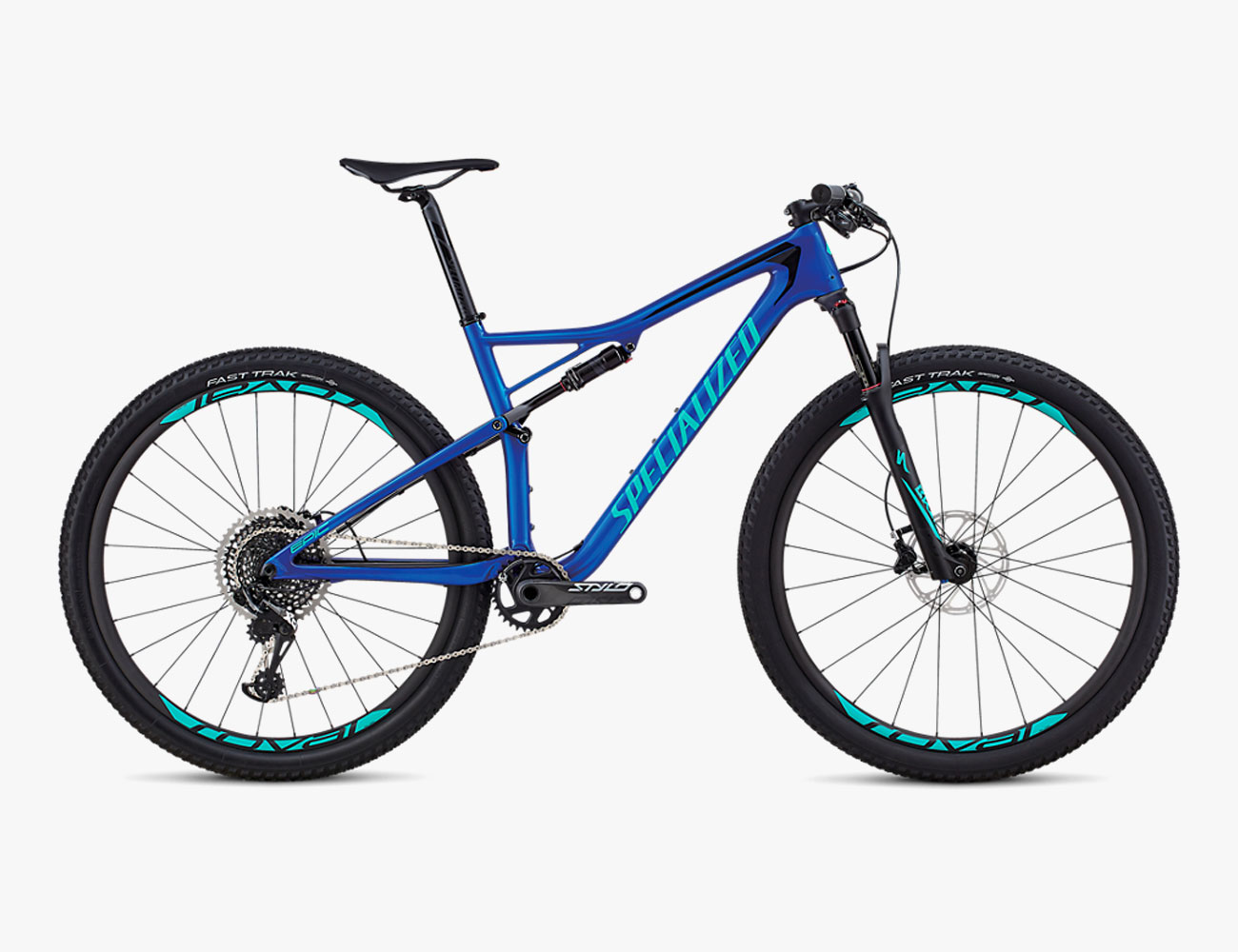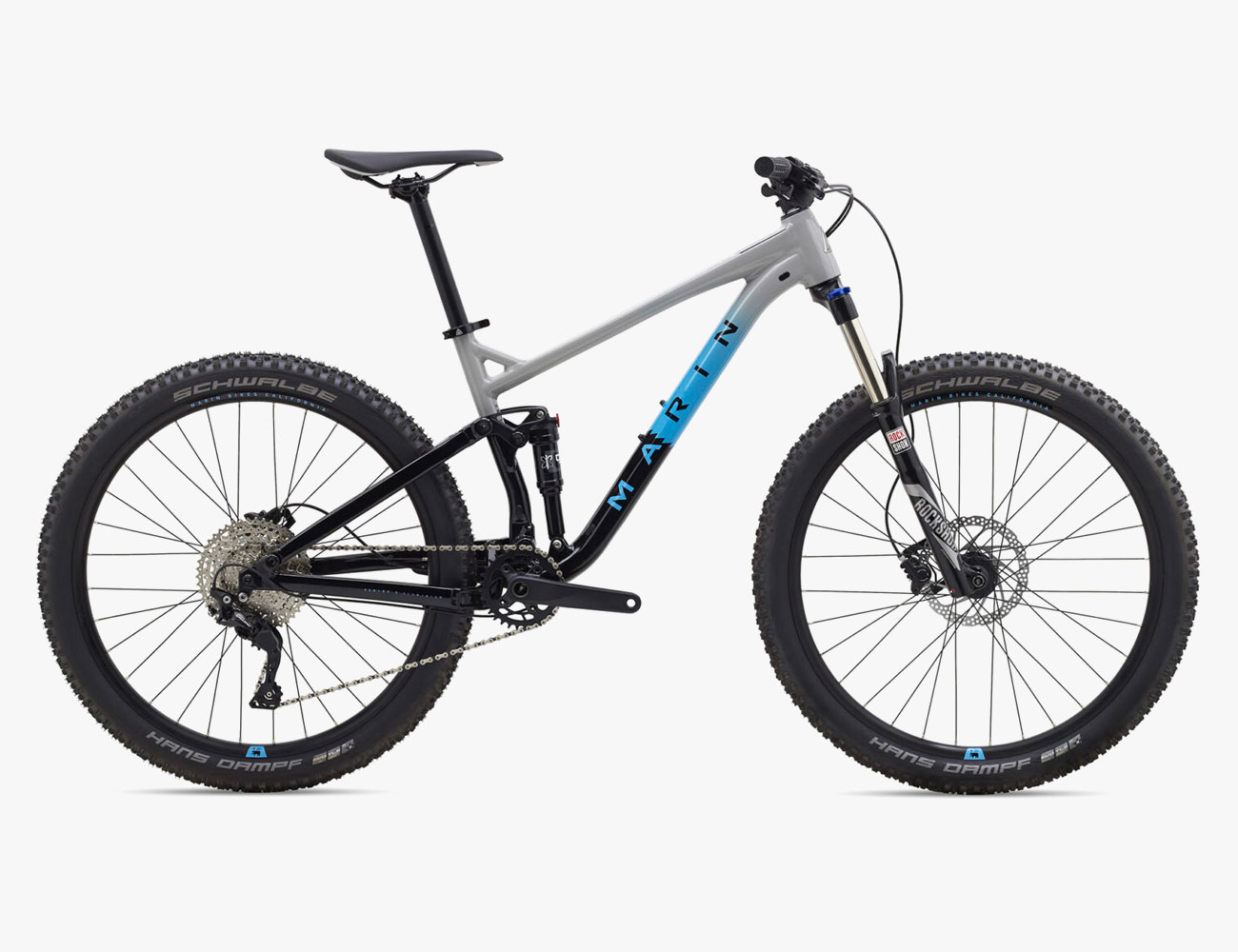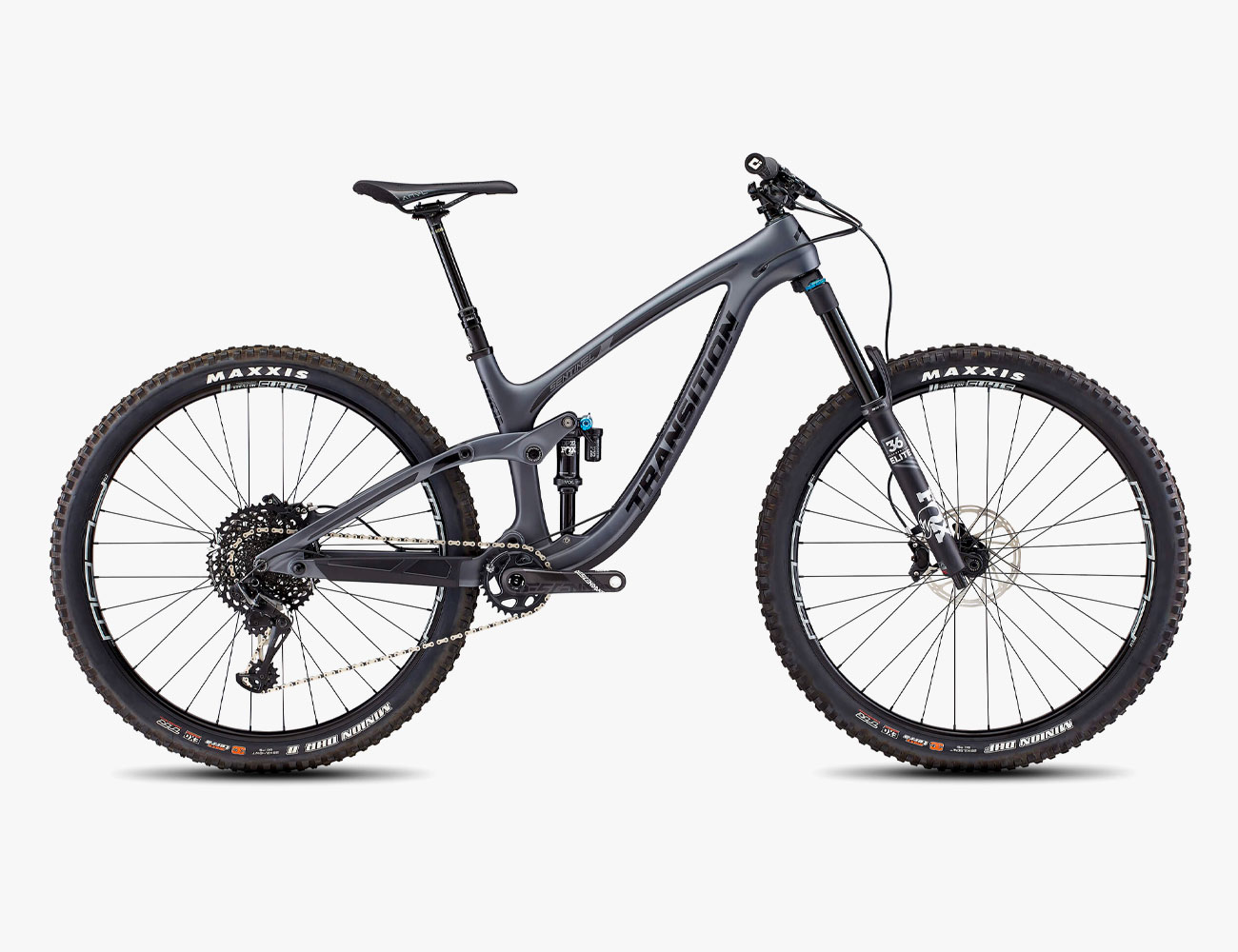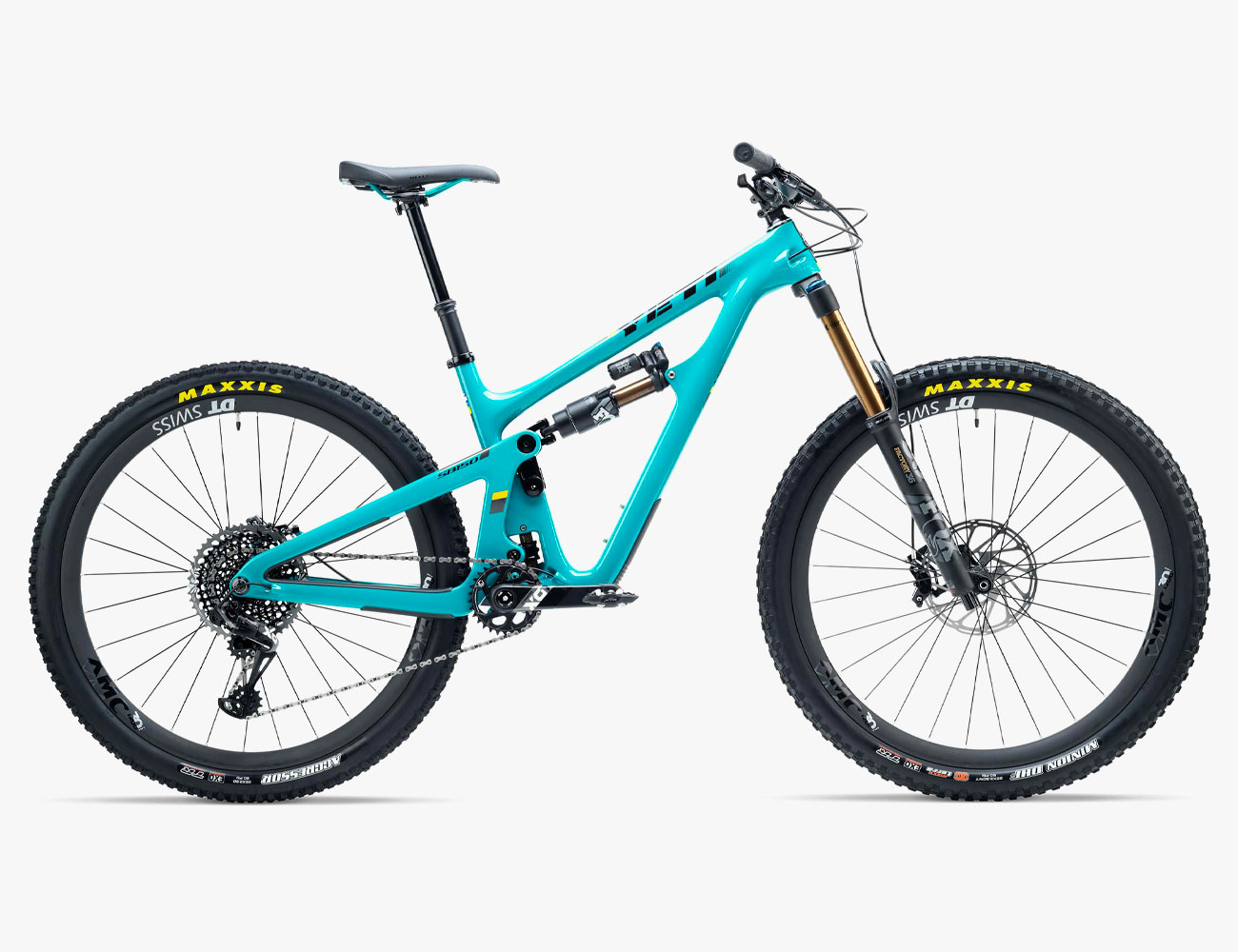Buying a mountain bike is somewhat like buying a car. Older ones can be functional enough to get you from one point to another, but newer ones have features and upgrades that make the ride safer, more comfortable and more fun. If you want to keep up with your trail-riding friends, become a better rider and keep bumps and bruises to a minimum, a modern mountain bike is an essential tool to add to your quiver.
What makes new bikes better?
In short: suspension and geometry. Combined, they let you pedal uphill without bouncing around, saving energy and keeping your wheels on the ground, which helps you negotiate technical terrain.
Modern geometry and suspension also improve the descent. Modern suspension forks and shocks are super responsive to both big and small variations in the trail, so they’ll smooth out the ride. When you’re rolling over pea- to walnut-sized rocks on a rough trail, the fork and shock absorb vibration, staving off fatigue, so you can ride for longer, or at least enjoy a really good beer post-ride without falling asleep. And when you’re barreling through a boulder garden or soaring off a jump, good suspension absorbs the landing, keeping you rubber side down.
The wheels are another factor. Older bikes have 26-inch wheels, whereas newer ones have 27.5- or 29-inch wheels, which roll over obstacles in the trail better. They’re also faster up and down. Choose 27.5-inch wheels for a more playful ride, and 29-inch wheels for a speedier one.
Lastly, gearing sets these futuristic bikes apart. Many mountain bikes now come with a 1x drivetrain, which features a single chainring in the front and a range of gears in the back. Having one shifter, not two, makes choosing the gear you want to be in much simpler. It also makes the drivetrain and your bike lighter, and it declutters your handlebar, leaving more space for a dropper post lever that lets you move your seat up and down on the fly.
How do I pick the right bike?
Whether you’re just starting out or you’re a seasoned rider, choose your new bike based on the terrain where you’ll ride, your budget and your aspirations. Do you want to drop off big jumps, get fast and win races, do multi-hour epic rides? Or is an hour after work in a city park what you need to clear your head and move your body? Cross-country bikes are best for smoother terrain and speedy uphills and also for gravel or touring. Trail bikes and enduro bikes are for progressively more technical riding, typically steeper trails with roots, rocks and other obstacles, and downhill bikes are for riding lift-served bike parks. Some bikes bridge the gap between disciplines because they climb well and descend well, for example, meaning there’s more overlap in design. As you move from cross-country to downhill, how much suspension a bike has will increase from 100mm or 120mm to 170mm and beyond. The amount of suspension your ideal bike needs isn’t based on your skill or experience, it’s based on how technical the terrain is that you want to ride.
A more expensive bike will be lighter with longer-wearing, more precise components, and more responsive with the added ability to tune the suspension to control the bike’s ride characteristics, which makes a big difference as you get into more technical terrain. If you never plan to leave the rail trail, you don’t need best in class suspension. If you hope to ride Enduro World Series trails, buy the best bike you can afford. Working within your budget, it’s better to grow into a bike instead of investing in a bike that won’t help you meet your goals and leaves you having to buy a whole new one in two years.
Hardtail vs. full suspension?
Hardtail bikes (those that have suspension in the front but not the rear) are typically more affordable than comparable full-suspension bikes. However, they’re not always lighter. Many hardtails come with fatter, heavier tires that, when run at low pressure, supplement the bike’s suspension on the trail, which helps you control the bike over rocky trails or a few too many potholes.
Do I need a dropper post?
If you’re riding single track and your bike doesn’t come with a dropper, add one. A dropper post lowers your center of gravity for descents and will significantly reduce the likelihood of OTB (over the bars) dismounts (a.k.a. a crash or fall, definitely not how you want to end the day).
What’s the difference in components?
Brakes, derailleur, chain, shifters, chain rings and cassette all comprise a bike’s drivetrain. As you climb in price, drivetrains become lighter and more durable, as well as more precise. The great news is that some of the features that were only available in the highest end drivetrains, like a 12-speed rear cassette, are now available at nearly all price points. Most bikes are available with a couple of frame options, and a range of component levels to choose from (called the spec), so that riders can find a bike that fits their budget and riding style.
Should I buy a carbon bike?
Carbon is lighter and better at absorbing shock than alloy or aluminum. It’s also generally more expensive. Carbon is easier to repair than aluminum.
Once I get my bike, how do I care for it?
Keep your drivetrain lubed by applying a bicycle-specific lubricant — one drop on every second link — when the chain seems dry or dirty. Let the lube soak in overnight, then run the chain through a rag in your hand to wipe off excess grease and dirt. Have a shop service your shock and change that oil annually. Take your bike for a tune-up and get your brake pads and cables checked at the same time.
Should I buy online or buy from a shop?
Direct to consumer brands, like Canyon, Diamondback and YT give riders a great value at the time of purchase. Eliminating the bike shop means those brands pass on savings to you. On the flip side, that also means you need to assemble the bike yourself and anything you want to customize is an extra cost sold separately. Sans bike shop, you won’t be able to ride the bike in advance to make sure it fits and feels good unless you’re able to try one at a demo. Many bike shops offer these tryouts to prospective purchasers, so you know what you’re getting before you take the time to purchase and build. Buy your bike at a shop and you get customer service, support in getting the suspension dialed, a free tune-up once cables have stretched — and the feel-good of keeping dollars in your community.
Buying Guide
KHS Aguila
Dipping a toe into XC racing or riding? This hardtail bike has the geometry for aspiring speed demons and the single track curious, with an 11-speed rear cassette to help you have fun in rolling terrain. But what we really appreciate about this alloy 29er is its versatility. Sure, you can hammer in your local Wednesday night citizen’s race, but you can also throw a set of 27.5 wheels on this bike with fatter tires and try out bikepacking.
Scalpel Fsi Carbon 5
Long and low, the carbon frame F-SI feels better the faster you ride it. This bike is a hardtail, but the carbon frame absorbs and disperses vibration at any speed, reducing rider fatigue. It soared up climbs, swooped through descents and was so fast in and out of corners it took a few rides to believe it. In the flats, this bike was exceptional at translating power from the pedals into forward motion. The 5 is the F-SI’s lowest spec, which means it comes with a double crown fork instead of Cannondale’s trademark lefty, an attention-grabbing fork with only one side. But once you have this speed demon frame, you can upgrade components on your own schedule, or as they wear out.
Specialized Epic Pro
This dream cross-country race bike is dialed with all the bells and whistles on a highly tuned, extremely light, stiff-where-you-want-it, supple-where-you-don’t carbon frame. With 100mm of front and rear suspension, it’s a classic cross-country race build. Specialized’s “Brain,” a shock modulator, knows when you need support and when you need more give and it fine tunes the suspension accordingly. Hydraulic disc brakes, an ultralight and shock-absorbing carbon bar, a high-end SRAM XO1 drivetrain and carbon wheels make this bike one fast, sexy beast. If you’re not afraid to invest in fun and you want to be over the finish line first, this bike will help you crush your previous PRs and get results.
Rocky Mountain Growler 20
Normally, we wouldn’t recommend a sub-$1000 mountain bike for a serious rider. Nearly all bikes at this price point are hybrids made for rail trail or bike path riding, not hammering single track. But the hardtail, plus tire, aluminum Growler is different, manufactured by mountain bikers for mountain bikers. The ride is playful and slack, which translates to crazy fun, but also stable. If you love single track, but can’t or don’t want to spend more than $1000, this is the best bike you can buy. You’ll need some leg power to ride up steep hills — the Growler has nine gears, not the standard 10-12. But the firm and supportive saddle, responsive mechanical disc brakes and a bump-absorbing 120mm coil fork will make the journey as good as the destination. Run the tire pressure low to soften the ride.
Marin Hawk Hill 1
If you’re on a budget, don’t buy a bike with low-grade front suspension. It’s not worth spending money on full-suspension unless that suspension will improve your ride. Marin’s Hawk Hill 1 does just that. The aluminum frame Hawk Hill has a 130mm suspension in the front and 120mm in the back, with smaller, playful 27.5-inch wheels and a 10-speed drivetrain. You give up a few gears with this bike and you’ll want to add a dropper, to give you more control on downhills and more efficiency on climbs, but it’ll put a smile on your face on the trail without putting a dent in your wallet.
Canyon Neuron CF 8.0
Weighing in at just over 29 pounds, Canyon’s carbon-frame Neuron has 130mm front and rear suspension to help you switchback up and sail down mountains. The Neuron’s suspension was inspired by Canyon’s Sender DH bike, but this bike excels in technical cross-country and on rowdy but not ridiculous trails. Geometry and suspension combined give it a stable and grounded feel. This was our favorite bike for smaller and lighter riders; Canyon uses a lighter shock tune on XS and S frame sizes as well as smaller wheels to makes it easier for petite pedalers to use the bike’s full range of travel (the length of the suspension) and to keep the feel of the bike consistent across sizes.
Diamondback Release 29 2
An aluminum trail ripper with 130mm suspension rear and 150mm front, the Release 29 2 bombed down technical singletrack like a boss. The frame isn’t the lightest, but the components are solid and dependable for hard use. This is the bike for an enthusiastic rider who wants to progress quickly or a rider who wants to ride hard but isn’t ready or able to commit to a bike that’s double the price. It never wavered at high speeds, and when we went to boost off a kicker or rail through a berm, the bike didn’t hamper us in any way.
Transition Carbon Sentinel GX
A workhorse of a bike, the carbon frame Sentinel will transform your riding on downhills. With 140mm rear travel and 160mm up front, this 29-inch-wheeled bruiser is a monster truck with a wheelbase, geometry, brakes and tires that border on what you’d see on a downhill bike. And while you can take this bike to the park, the GX Eagle drivetrain provides a dinner plate of 12 rear gears to help you get up any climb. The bike climbs fine, but it’s the downhill where it will make you feel like you’re ready to tackle World Cup courses. If you want a bike for mellow flow trails or sprints, choose another. It’s not the hoppiest or most playful ride, but you’ll own rubble, rocks and drops on the Sentinel.
Evil The Offering
A steep seat angle and longer reach make this one of the most precise steering, stable bikes we’ve ridden in rocky, rooty and steep terrain. With 140mm front and rear suspension, the Offering was tenacious on slick rocks and roots, easy to throw around and hoppy and poppy in berms and jumps. Even though this is a big bike, we didn’t dread the climbs. In fact, thanks to the aggressive tires, we cleared steep rocks and roots on the uphills that we didn’t make on other bikes. The Offering gives you options: a pair of flip-chips lets you change the bike’s geometry from low to extra low depending on how downhill focused you want to be. The lower the bottom bracket and the slacker the geometry, the more stable a bike is in steep, heart-pounding descents. This is the gold star spec — not over the top with fancy electronic features, but with a high level of parts and pieces on the frame that will make you the envy of your friends.
Scott Ransom 720
For riding bike parks like Killington, Snowmass and Whistler, you want a bike with maximum suspension and slack geometry to absorb impact arcing tabletops and airing jumps, to keep you stable racing down steep descents and through cobble-filled rock gardens. Traditionally, park riders choose massive suspension double crown fork downhill-specific bikes that are nearly unbreakable — but heavy. If you’re not racing World Cup courses, most riders don’t need a single-purpose, downhill-specific bike, and in fact a crossover bike like the aluminum frame Ransom 720 is lighter, so less tiring, which means you get more laps. With 170mm front and rear suspension and SRAM NX Eagle 12 speed in the rear, this bike is an aggressive descender, adequate pedaler and super dependable all around.
Santa Cruz V10 S/Carbon CC
A staple in the Santa Cruz line, the double crown downhill-only V10 has won more World Cups than any other downhill bike. Now it’s been reinvented so it’s not just for racers, but the weapon of choice for weekend warriors who just want to ride lift-served laps. Its 216mm suspension can tackle the most extreme terrain, hucks, drops and gnar. Choose speedy 29-inch wheels or more playful 27.5-inch wheels, then pick your geometry. A new flip chip lets you change the headtube angle and bottom bracket height to make the bike more lively or more stable, depending on the day. The carbon frame on this build bumps up the price, but it’s worth it for the reduced weight and the vibration dampening.
Yeti SB150 X01 Turq
This carbon 170mm front and 150 mm rear bike straddles the enduro and downhill categories. It’s nimble and playful, plus easy to jump. It made us feel like a superhero in the park and on any technical trail. Yeti nailed this bike’s geometry and suspension. The company uses a secondary shock that prevented it from ever bottoming out, and that prevents any bouncing on climbs, which wastes energy. And, because it’s at least five pounds lighter than most downhill-specific bikes, it’s easier to move around and therefore less tiring to ride. Spec’ed with a light and dependable XO1 Eagle drivetrain, it has all the gears you need even when the lifts aren’t running. And you won’t be left behind on any trail you choose to ride. This bike is one kickass chameleon.

